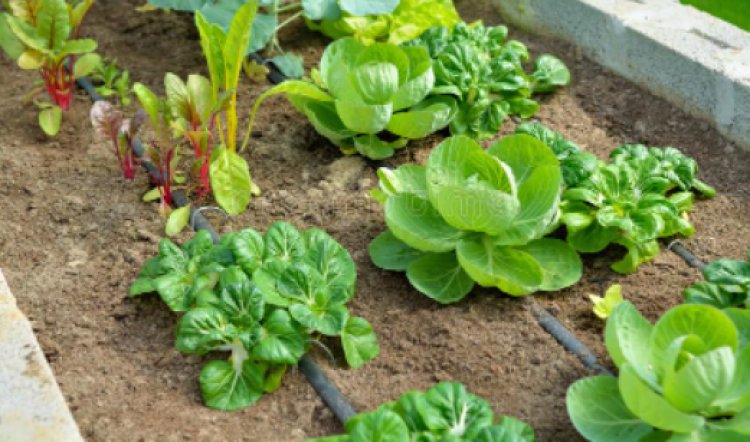How to Start a Home Garden
Growing your own vegetables can be enjoyable and beneficial. To get started, you'll need some good soil and a few plants, and you'll be able to offer your family and friends fresh, healthful vegetables.

However, having a perfect vegetable garden involves learning and understanding what it takes to keep your plants healthy and strong.
Choosing what to grow: You can grow a wide variety of crops in your home garden. Consider cucumbers, turnips, radishes, tomatoes, peppers, and carrots for tiny gardens. Consider vegetables like broccoli and bell peppers, which are expensive to buy at the store. To add more variety to your diet, you can grow a variety of vegetables.
Choose a location: You must choose a location with loose, rich, and well-drained soil. Low regions where water collects or the soil remains damp should never be chosen. In places with poor drainage, your vegetables will not grow. Vegetables require plenty of sunlight to thrive, so don't plant them in the shade or in the darkness.
Seeds or transplants: It is helpful to know which vegetables are easiest to grow from seed or transplant if you are a beginner. Seeds are less expensive, provide more variety, and have a better success rate, although some plants will require transplanting. Transplants also allow you to get a head start on growing fragile vegetables that demand a long, warm growing season, such as tomatoes, peppers, and eggplants.
Garden Size: It's important to choose a garden size that you can effortlessly manage and that meets your needs. Here are some things to think about while deciding on the size of your garden
- Purpose of gardening - a flower garden requires less space than a vegetable garden.
- Vegetables to be grown - Because some vegetables require a lot of room while others don't, choose a garden size that allows you to grow the vegetables you desire.
- Size of Family - A large garden may be conveniently maintained if you have more individuals to help with garden maintenance; moreover, a larger family will consume more vegetables, thus a large garden is perfect.
When to plan: Every region has a varied planting season, which is primarily determined by the weather, and each vegetable has its own temperature preferences. Seasonal vegetables are classified into two groups: warm season and cool season. Cool-season crops can withstand lower temperatures, allowing them to be planted before the soil warms up in the spring. They can also be planted in the late summer for a fall harvest after the first frost. Warm-season crops, on the other hand, cannot tolerate frost and will not grow in cold soil, thus they must be planted after the last frost in the spring and early enough to develop before frost in the fall.
Where to plant vegetables: You must arrange vegetables in such a way that they make the best use of both space and light. Tall plants, such as maize and tomatoes, can be grown on one side of the garden, apart from short-length vegetables like bush beans. You can also split vegetables into categories based on their maturity time. Plant little, quick-maturing vegetables in between the larger ones. Plant vine crops near a fence if possible. Make a rough sketch of the location and spacing of the vegetables in the garden on paper.
Conclusion
Choose foods that you and your family enjoy. Plants that you would not consume are not worth the effort. To avoid overplanting, be realistic about how many vegetables your family will use. Trying to care for a large number of plants can be weary. Consider the variety of vegetables available at your local grocery; certain vegetables are significantly superior when grown at home and are far less expensive than grocery store herbs.


























